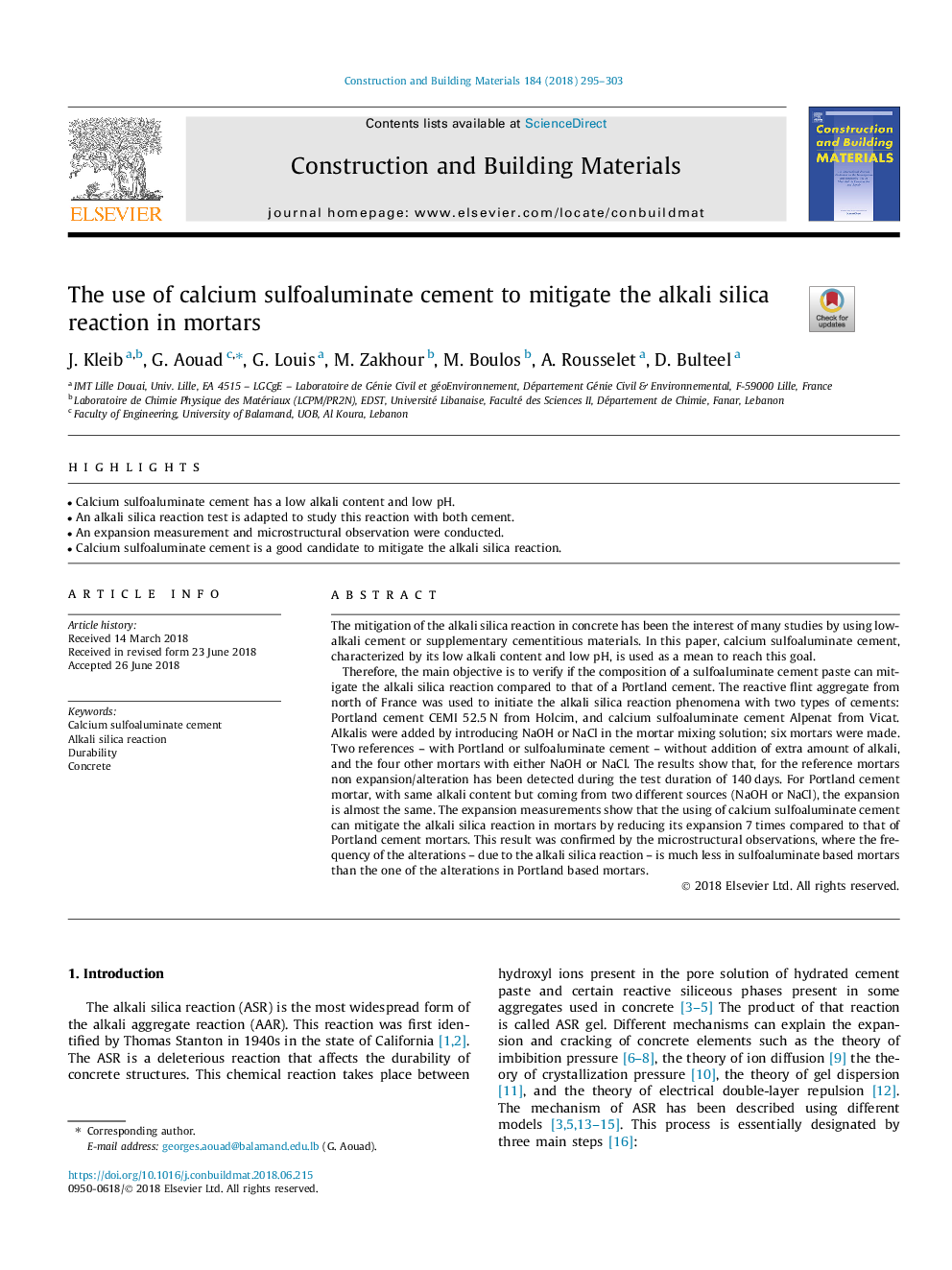| Article ID | Journal | Published Year | Pages | File Type |
|---|---|---|---|---|
| 6712012 | Construction and Building Materials | 2018 | 9 Pages |
Abstract
Therefore, the main objective is to verify if the composition of a sulfoaluminate cement paste can mitigate the alkali silica reaction compared to that of a Portland cement. The reactive flint aggregate from north of France was used to initiate the alkali silica reaction phenomena with two types of cements: Portland cement CEMI 52.5â¯N from Holcim, and calcium sulfoaluminate cement Alpenat from Vicat. Alkalis were added by introducing NaOH or NaCl in the mortar mixing solution; six mortars were made. Two references - with Portland or sulfoaluminate cement - without addition of extra amount of alkali, and the four other mortars with either NaOH or NaCl. The results show that, for the reference mortars non expansion/alteration has been detected during the test duration of 140â¯days. For Portland cement mortar, with same alkali content but coming from two different sources (NaOH or NaCl), the expansion is almost the same. The expansion measurements show that the using of calcium sulfoaluminate cement can mitigate the alkali silica reaction in mortars by reducing its expansion 7â¯times compared to that of Portland cement mortars. This result was confirmed by the microstructural observations, where the frequency of the alterations - due to the alkali silica reaction - is much less in sulfoaluminate based mortars than the one of the alterations in Portland based mortars.
Related Topics
Physical Sciences and Engineering
Engineering
Civil and Structural Engineering
Authors
J. Kleib, G. Aouad, G. Louis, M. Zakhour, M. Boulos, A. Rousselet, D. Bulteel,
